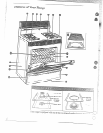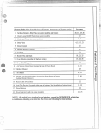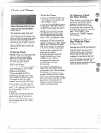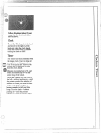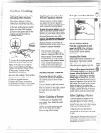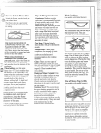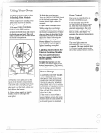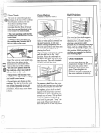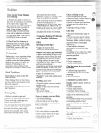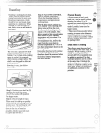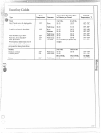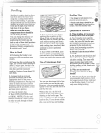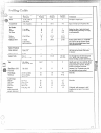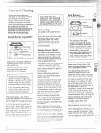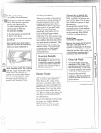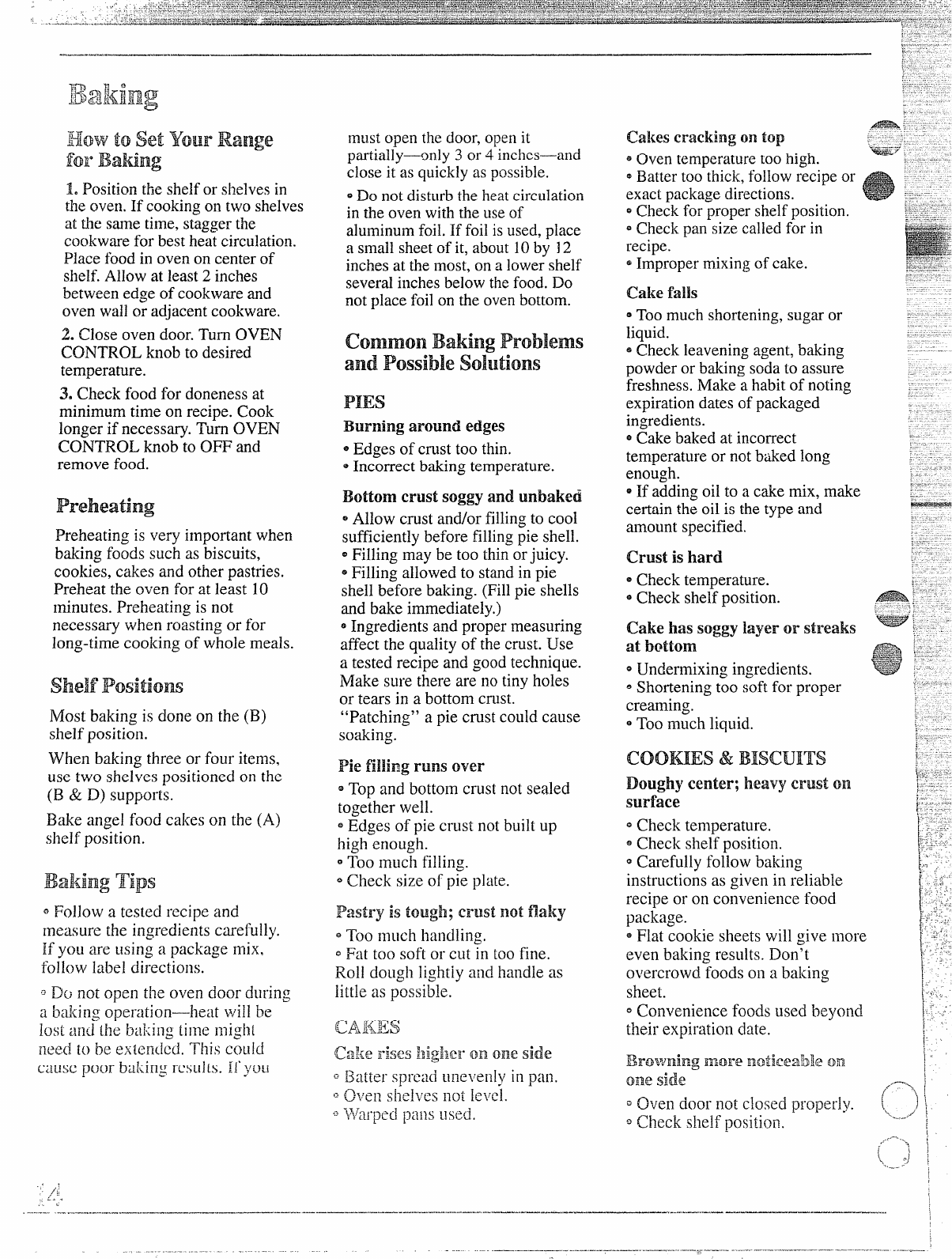
1. Positionthe shelfor shelvesin
the oven. If cookingo~~two shelves
at the same time, staggerthe
cookware for best heat circulatiori.
Place food in oven on center of
shelf. Allow at least 2 inches
between edge of cookwareand
oven wailor adjacent cookware.
2. Close oven door. Turn OVEN
CONTROL knob to desired
temperature.
3. Check food for doneness at
minimum time on recipe. Cook
longer if necessary. T’umOVEN
CONTROL knob to OFF and
remove food.
Preheating
Preheating is very important when
baking foods such as biscuits,
cookies, cakes and other pastries.
Preheat the oven for at least 10
minutes. Preheating is not
necessary when roasting or for
long-~imecooking of whole meals.
Most baking is done on the (B)
shelf position,
When baking three or four items,
use two shelves positioned on the
(B & D) supporls.
B~akeangel food cakes on the (A)
shelf position.
~~o~lowa tested recipe and
measure the ingredients carefully.
If you are using a package mix,
follow label directions.
./;
--
.“
must open the door,open it
partially---only3 or 4 inches-—-and
close it as quickly as possible.
~Do not disturbthe heatcirculation
in the oven with the useof
aluminumfoil.If foil isused,place
a small sheetof it, about 10by 12
inchesat the most, on a lower shelf
severalinchesbelow the food.Do
not place foil on the ovenbottom.
Conlmon Baking Problems
and Possible
solutions
PIES
Burningaround
edges
@
Edges of crust too thin.
~Incorrect baking temperature.
Bottom crust soggy and unbaked
~Allow crust and/or filling to cool
sufficiently before fillingpie shell.
~Filling may be too thin orjuicy.
~Filling allowed to standin pie
shell before baking. (Fillpie shells
and bake immediately.)
~Ingredients and proper measuring
afiect the quality of the crust. Use
a tested recipe and good technique.
i~ake sure there are no tiny holes
or tears in a bottom crust.
“Patching” a pie crust could cause
soaking.
Pie filling runs over
*Top and bottom crust not sealed
together well.
~Edges of pie crust not built up
high enough.
~Too much filling.
~Check size of pie plate.
Pastl”y is tough; Crust Ilot flaky
~Too mtlch handlingt
GFat too soft or cut in too fine.
Roll dough lightiy and handle as
little as possible.
~- !.l~~r~ -p
L$. d.dd
~c~i{erises Iligllev QE2one side
~Butler sl]rcad unevenly in pan.
“01’’ell
Sl;~il’CS 11011~1’’~l.
L>
yi77LI-~3tdi3[lI)S
LISed,
oShorteningtoosoftforproper
. .
creaming.
~Toomuchliquid.
*--—
:---=..
COOKIES & BISCUITS
=e-,
~....
..’:
‘
Doughy center; heavy crust on ,
;,,,
.7+-.
surface
;L
~..<.
:.
!%.-2.
,:. --
*
Check temperature.
[’ ‘-
.
.
..
*Check shelf position.
T.
:_.,-
~-.::
‘.-
QCarefully follow baking
~,;.“
instructions as given in reliable
i
:::
recipe or on convenience food
1
).’
L,
J;
,,;.
package.
[: ;,.,
‘
~Flat cookie sheets will give more
j .. .
,,-
even baking results. Don’t
~.
‘L
,,
overcrowd foods on a baking
sheet.
1“
i,
~Convenience foods used beyond \-L-
their expiration date.
\’
[
BrQFvIlingInore nQtiQea!31eon
/-
Qmeside
k
[
<-~, \
oOven d[?ornot closed proper!:y. ~ ~, ~
s Check shelf position.
...”--
I
.—-.—-..-—.”. -—... .—... -.—.. -.—.. -—-— .———————. -— .———-.— ..-. -—. .-. -.-.. -..—.. -”. -.—-.—-—... ”— -.-,, ----
—..- .. . . .. ...-=..— ——-—.—..=. .——..—.— . . . ..
I



